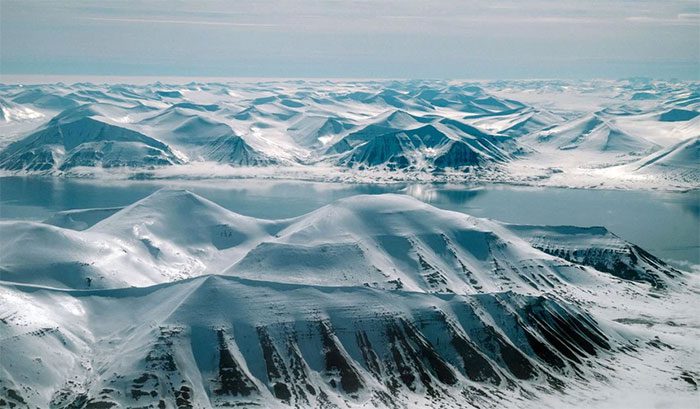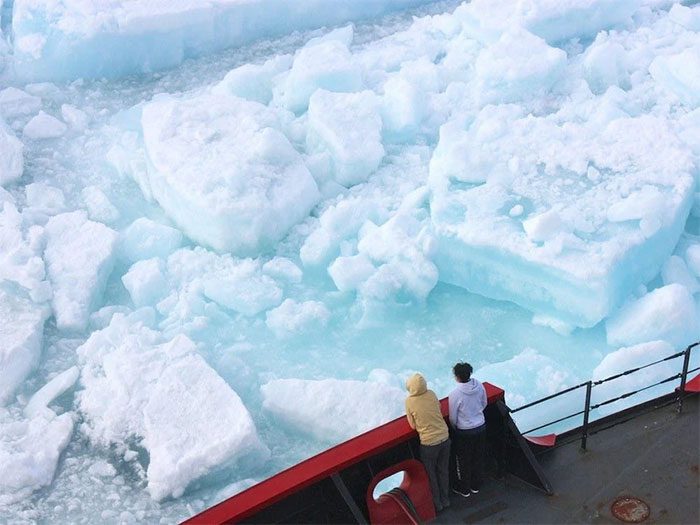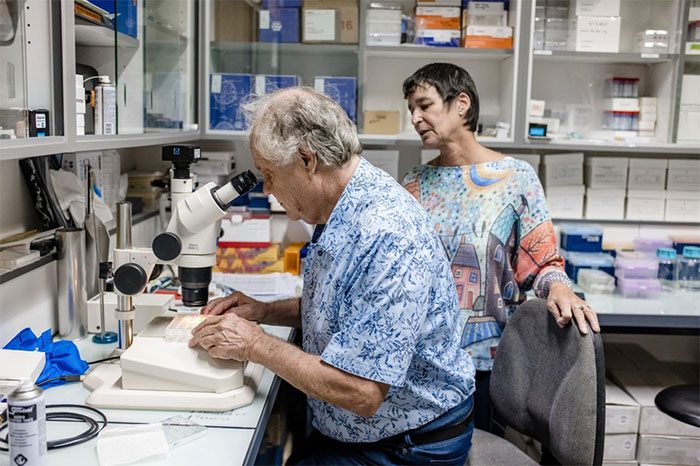Prehistoric viruses are pathogens preserved in glaciers, permafrost, or other frozen environments for extended periods.
Causes of Permafrost Melting
Global warming is closely linked to large-scale industrial activities by humanity since the Industrial Revolution. These activities release significant amounts of greenhouse gases such as carbon dioxide, methane, and nitrous oxide, which absorb and emit heat from the Earth’s surface, creating a greenhouse effect that causes global temperatures to continue rising. This warming trend also increases the frequency and intensity of extreme temperature events.
Permafrost refers to the layer of permanently frozen ground in polar regions, high mountains, or cold marine areas on Earth. Due to elevated temperatures caused by global warming, permafrost is gradually beginning to thaw.
- Firstly, the melting water from permafrost affects the physical structure of the ground. The increased frequency of freeze-thaw cycles reduces soil stability, causing it to sink and collapse.
- Secondly, melting permafrost releases large amounts of methane, a greenhouse gas with a stronger greenhouse effect than carbon dioxide. The release of methane further accelerates global warming.

The Arctic Circle is one of the five major lines of latitude depicted on the Earth’s map. It is located at 66° 33′ 39″ north of the equator. The area north of this line is called the Arctic region, while the area just south of it is referred to as the northern temperate zone. The corresponding latitude in the Southern Hemisphere is known as the Antarctic Circle.
In addition to the direct impacts on land and climate mentioned above, the melting of permafrost profoundly affects ecosystems and human activities. A significant amount of organic matter preserved in permafrost, including plant remnants and ancient biological remains, is released as it melts. This organic material decomposes by microorganisms, releasing carbon dioxide and methane, thus increasing greenhouse gas emissions. Moreover, there are vast mineral resources hidden beneath permafrost; when it melts, these resources may be mined and exploited, exacerbating environmental damage and pressure on ecosystems.
Why Will Cities in the Arctic Circle Collapse?
The two main causes of land instability due to melting permafrost are land subsidence and landslides. As permafrost melts, moisture is released into the soil, causing the soil volume to shrink. This subsidence can lead to building foundations sinking and tilting, resulting in instability. Additionally, the lubrication from melting ice can trigger landslides, worsening land instability issues. These phenomena increase risks for both residents and buildings.

Due to global warming, permafrost is gradually beginning to melt. (Illustrative image).
In the face of this challenge, cities in the Arctic Circle need to implement a series of measures to address the issue of land instability caused by melting permafrost.
- First, it is crucial to enhance monitoring and research efforts to understand the condition and rate of permafrost melting. This will provide the necessary information and guidance for urban planning and construction.
- Second, measures to stabilize the ground need to be strengthened, such as enhancing the stability of infrastructure and applying appropriate building designs to mitigate the risks of subsidence and landslides.
The Possibility of Prehistoric Viruses Awakening
Prehistoric viruses are pathogens preserved in glaciers, permafrost, or other frozen environments for long periods. Restricted by extremely low temperatures and a lack of external nutrients, these viruses can survive in ice for extended durations. However, as global temperatures rise, previously frozen areas begin to melt, allowing some latent viruses within to reactivate.

Scientists generally agree that prehistoric viruses may pose a potential threat to human health. (Illustrative image).
The process of reactivating viruses from their frozen state is complex and requires suitable environmental conditions and hosts.
- First, when viruses are released into the environment, they need to find suitable hosts, such as bacteria or animals. Only by receiving sufficient nutrients from the host and appropriate environmental conditions can the virus complete its replication and spread.
- Second, the dispersal of viruses is also influenced by environmental factors such as temperature and humidity. If environmental conditions are unsuitable for the virus’s survival, they may quickly lose their activity.
However, despite these limitations, scientists generally agree that the prehistoric viruses trapped in ice may pose a potential threat to human health. By analyzing samples from glaciers and permafrost, researchers have discovered the existence of many ancient viruses, including smallpox and West Nile viruses. The spread of these viruses could lead to global pandemics, especially in communities lacking immunity to these types of viruses.
According to a study conducted by scientists from France, Russia, and Germany, published on bioRxiv – but not yet peer-reviewed – researchers have isolated 13 types of viruses from 7 samples of ancient permafrost in Siberia. Science Alert explains that these samples were taken from beneath a lake, from mammoth fur, and even from the intestines of a Siberian wolf. According to a report by the Independent, one of these viruses has been “dormant” for about 48,500 years in permafrost, yet it still shows signs of infectivity towards modern species. Researchers say this is strong evidence that viruses trapped in permafrost are not as “rare” as previously thought. They warn that such viruses could pose public health threats as climate change causes the Earth to warm and melt the frozen regions of the planet, such as Siberia. |




















































